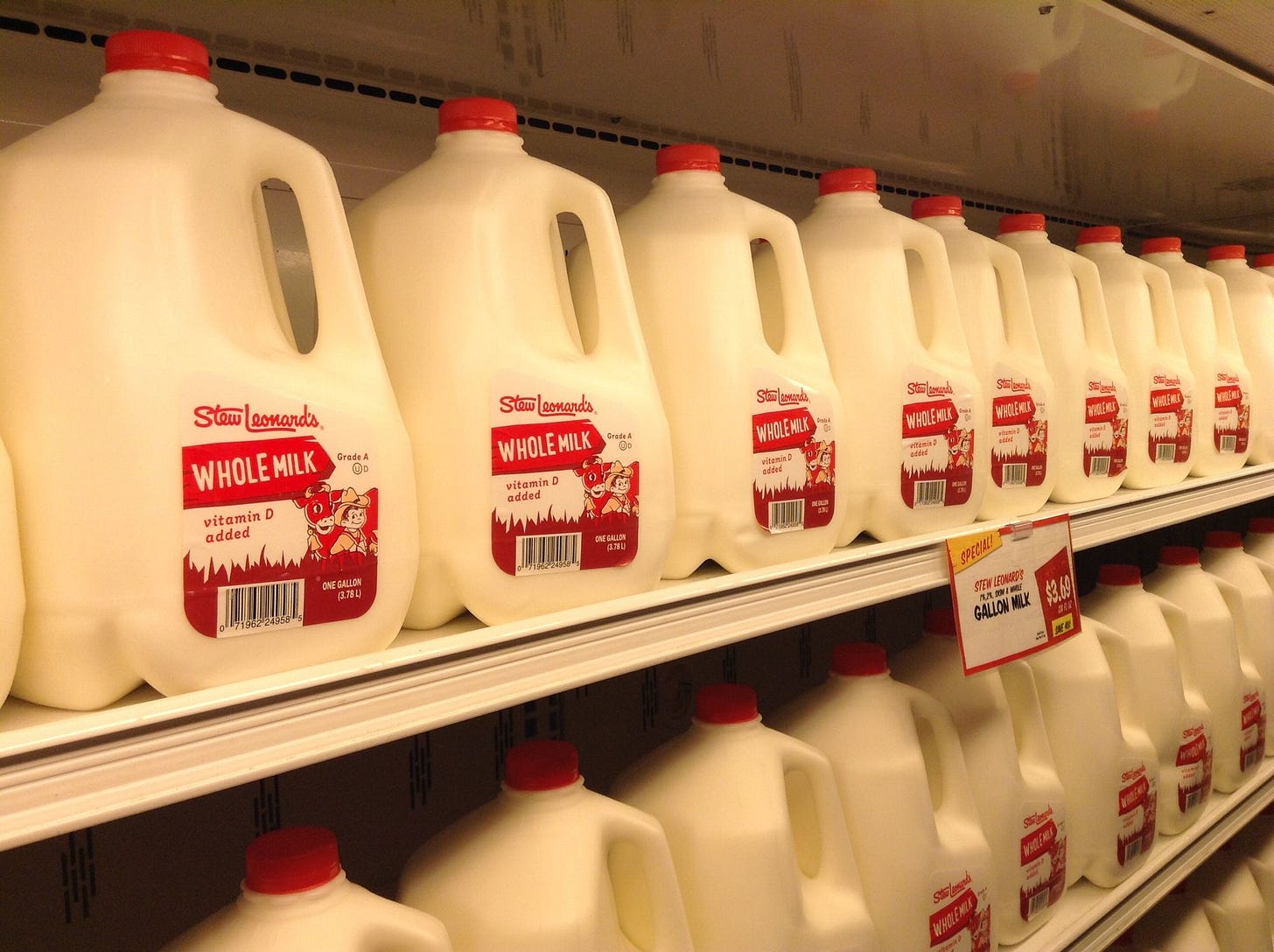No, the real inflation rate isn’t 15 percent
Jordan Peterson and Jack Dorsey are touting a bogus theory about the inflation rate.

Last week, the Bureau of Labor Statistics announced that the official inflation rate had soared to 6.2 percent in October, the highest level in decades. But some conspiracy-minded analysts insist that the true inflation rate is much higher. Last Wednesday, for example, self-help guru Jordan Peterson tweeted a chart that purports to show the year-over-year inflation rate is almost 15 percent, not 6 percent.


The chart comes from a website called Shadow Government Statistics. Its premise is that the Bureau of Labor Statistics made a series of methodological changes in the 1980s and 1990s that have systematically understated the true rate of inflation. According to Shadowstats, if you calculate the inflation rate using old methodology from the 1980s, the true inflation rate is 6 to 8 percentage points higher than the official statistics indicate—and has been for decades.
This line of reasoning has become popular in some cryptocurrency circles. For example, Bitcoin enthusiast and Twitter CEO Jack Dorsey tweeted about it last week:


But the creator of the chart, economist and Shadowstats founder John Williams, has admitted that he doesn’t actually re-compute the inflation rate using earlier methodology. He does something much cruder: he starts with the official inflation figure and adds a fudge factor that represents his estimate of how much the official consumer price index (CPI) understates the true inflation rate.
The problem is that Williams’s adjustment is way larger than it should be. The BLS has changed its methodology over the years, but all of those changes put together have probably changed the measured annual inflation rate by a fraction of a percentage point—not the 6 to 8 percentage points Williams claims
I spoke to Williams by telephone on Monday and again on Tuesday. In both calls, he stood by his analysis. He insisted that he is simply using the government’s own estimates of how methodological changes have altered the official inflation rate.
But as we will see, his numbers appear to be based on a basic mathematical error. They also fly in the face of common sense.
Prices have not risen six-fold since 2000

Williams would have us believe that the annual inflation rate has averaged about 9 percent over the last 21 years. That would mean that prices have risen six-fold since 2000. If you’re over 40, you don’t need to take anybody’s word for it. You probably remember how much stuff cost at the turn of the millennium. Do the math for yourself and see if your personal cost of living has risen six-fold in the last 21 years.
Here are some examples from my own life:
When I entered the University of Minnesota as a freshman in 1998, in-state undergraduate tuition was around $4,500 per year. If that price had inflated at 9 percent annually over the last 23 years, tuition would be $32,000 today. It’s actually around $15,000.
In 2000, a chicken burrito at Chipotle cost a little more than $5. If that price had inflated at 9 percent annually over the last 21 years, it would cost $30 today. In fact it costs $8.50.
In 2001, I bought a plane ticket to visit my sister in Dallas for $261.50. If that price had inflated at 9 percent annually over the last 20 years, a similar ticket would cost $1,400 today. In fact, you can get a comparable ticket today for $260.
In 2002, I rented a two-bedroom apartment in this building in St. Paul for $850 per month. If that price had inflated at 9 percent annually over the last 19 years, rent there would be $4,300 today. Zillow estimates it’s actually around $1,500.
In 2003, my now-wife bought her first car, a Mazda Protege 3, for around $17,000. If that price had inflated at 9 percent annually over the last 18 years, a similar car today would cost $80,000. In fact, similar cars today sell for around $25,000.
Obviously anecdotes like this aren’t going to yield a precise estimate of the inflation rate. But they’re a good way to quickly check if an inflation estimate is plausible or not. If no individual price has inflated at nine percent annually, it would be impossible for the average price level to do so.
"I can't give you a real hard example"

In our phone conversations, I asked Williams to give me examples of consumer products that have gotten six times more expensive over the last 20 years. He seemed stumped. Instead, he suggested that there’s been a drastic decline in product quality.
“If you get a suit off a rack in Sears Roebuck as opposed to going to a tailor, that suit's going to be a lot more expensive,” Williams told me. “If through redefinitions over time they bring down the cost of the suit, using cheaper cloth, you no longer get it made by the tailor, you'll find that the cost of that comes down.”
I’m sure some products have declined in quality over time, but I couldn’t believe that would explain a six-fold rise in the measured price level. So I asked him, again, to name some products that are six times more expensive than they were in 2000.
“I'm sure I can do that,” he said. “It would probably be in the food area. I don't have the time to get into it right now.”
I asked the same question a third time later in our conversation.
“I can't give you a real hard example—this item here is six times more expensive than it was then because it's just a straight sticker price,” he told me. “They're looking at a sticker price in one circumstance and then if the quality is being reduced, that's inflation.”
There’s a deep irony here. Williams normally portrays himself as reconstructing an old-fashioned, simple inflation index that just tracks “price changes in a fixed-weight basket of goods and services.” He has complained that the use of “nebulous quality changes” and other statistical shenanigans has “destroyed the concept of the CPI as a measure of the cost of living.”
But when I asked for examples of products whose sticker prices have risen by as much as his claimed inflation rate, his answer was essentially that the BLS wasn’t doing enough to adjust prices for (declining) product quality!
The Shadowstats chart is based on an elementary math error

Williams’ other argument is that he’s simply using government numbers.
“Those are the government's estimates,” he insisted on multiple occasions during our conversation. If the resulting figures are implausible, he suggested, the blame lies with the feds.
But they aren’t the government’s estimates. They’re Williams’s extrapolations from government data. And they appear to be based on a huge, and fairly elementary, math error.
One of the most challenging parts of calculating an inflation index is adjusting for product quality. For example, today’s televisions are larger, thinner, and have higher resolutions than televisions 20 years ago. If you can get a flat-screen, high-resolution, 50-inch TV in 2021 for the same price as a bulky, low-resolution 30-inch TV cost in 2001, that’s a clear improvement in the value consumers get for their dollar. Any reasonable inflation metric should take these changes into account. But there’s room for debate about the exact magnitude of the improvement.
In 1999 the BLS started using a new procedure to calculate the relative value of different television models. That’s one of dozens of small changes the BLS made during the 1980s and 1990s—changes that affected everything from used cars to clothing.
To help the public understand the impact of these changes, the BLS calculates an alternative version of the CPI that tries to retroactively apply today’s methodology to earlier time periods. The difference turns out to be pretty small. The standard price index, the CPI-U, indicates that prices increased by a factor of 2.73 between 1980 and 2011—that is, if something cost $100 in 1980, it would have cost around $273 in 2011. The CPI-U-RS index, which tries to retroactively apply current methodology to previous years, shows prices rising by a factor of 2.60 over the same 31-year period.
Divide these two numbers and you find that the measured price level would be 5.1 percent lower if the BLS had started using its current methodology in 1980.
It might seem like you could turn this around and try to estimate how much higher the official price level would be if the BLS had kept its old methodology. But this doesn’t really work because the impact of a methodological change isn’t constant. A change might increase measured inflation in one year—or decade—and decrease it the next.
But Williams tried to do it anyway. In 2013, he published a lengthy report explaining how he estimated the true inflation rate. In that piece he did the exact calculation I did above, showing that methodological changes lowered the measured price level increase by 5.1 percent between 1980 and 2011.
But then he makes a big mistake:
The aggregate impact of the reporting changes since 1980 has been to reduce the reported level of annual CPI inflation by roughly seven percentage points, where 5.1 percentage points come from the BLS’s published estimates of the effects of the individual methodological changes on inflation, shown in the preceding table. The balance comes from ShadowStats estimates of the changes not formally estimated by the BLS.
I’ve bolded the huge, gobsmacking error here: the word “annual.” That 5.1 percent difference between the CPI-U and CPI-U-RS indexes didn’t happen in a single year; it’s a cumulative change in prices over 31 years. To compute an annual rate, you have to divide 5.1 by the number of years over which the change took place.
Williams doesn’t seem to realize this. He thinks methodological changes reduced the measured inflation rate by 5.1 percent every year. This is akin to driving your car 2,000 miles during a 31-hour road trip and then concluding that the car was traveling at 2,000 miles per hour.

When we talked on the phone, Williams defended his analysis.
“All those little changes that go forward aggregate,” Williams told me. In his view, each year’s divergence between the CPI-U and CPI-U-RS reflects the impact of that year’s methodological changes. He thinks that after the first year, a methodological change is incorporated into the CPI-U, and therefore no longer impacts the delta between the two series. Therefore, in his view, adding up the annual differences yields an estimate of the cumulative effect of all the methodological changes.
But each year’s divergence doesn’t only reflect that year’s methodological changes. For example, the 1981 divergence between the CPI-U and the CPI-U-RS doesn’t only reflect methodological changes made to the CPI-U in 1981—it also reflects changes made in every year after 1981.
For more than a decade, economists have been scratching their heads about Williams’ claims that he’s using BLS numbers, since his numbers are vastly higher than the BLS’s own estimates. For example, the BLS estimated that one of its most significant changes—a switch to a geometric formula for averaging prices—reduced the measured annual inflation rate by around 0.28 percentage points between 1999 and 2004.
Based on my conversations with Williams, I think I now understand what he’s doing: he’s misinterpreting a cumulative 20-year change in the measured price level as a change in the measured annual inflation rate. And that caused him to overestimate that annual change by at least an order of magnitude.
If you enjoyed this article, please subscribe to get Full Stack Economics delivered straight to your inbox. It's free.

